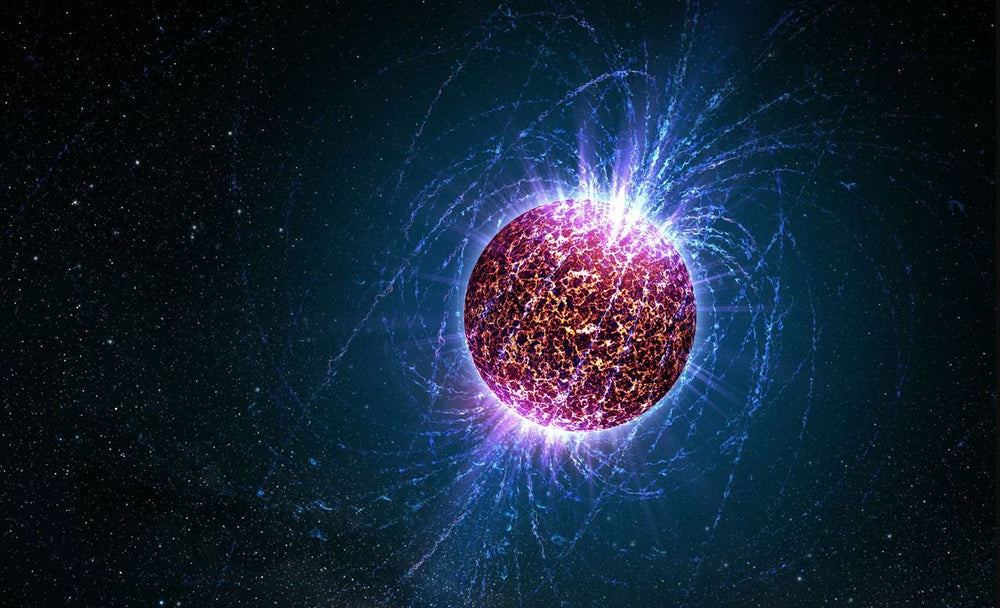What is a Pulsar
Pulsars are some of the most fascinating objects in the universe. They are highly magnetized rotating neutron stars that emit beams of electromagnetic radiation. Discovered in 1967, pulsars have since captured the attention of scientists and astronomers alike. In this article, we will explore the history, formation, and characteristics of pulsars, as well as their significance in the study of astrophysics.
Pulsar Simple Definition
A pulsar is a highly magnetized, rotating neutron star that emits beams of electromagnetic radiation from its magnetic poles. These beams are observed as periodic pulses of radiation, and if Earth happens to be in the path of these beams, astronomers detect them as regular pulses of light. Pulsars are remnants of massive stars that have undergone supernova explosions.
What is a Pulsar made out of
Pulsars are primarily composed of neutrons, forming a highly dense and compact object known as a neutron star. Neutron stars are created during the core collapse of massive stars in the aftermath of a supernova explosion. The immense gravitational forces during this collapse cause protons and electrons to merge into neutrons, resulting in a stellar remnant with a density so high that a sugar-cube-sized amount of its material would weigh billions of tons on Earth.
The intense magnetic fields of pulsars are another crucial component. Pulsars exhibit magnetic fields thousands to billions of times stronger than Earth's magnetic field. The origin of these strong magnetic fields is not fully understood, but they play a key role in the emission of radiation and the pulsating behavior of these celestial objects.
How Pulsars are formed
The formation of pulsars is intricately linked to the life cycle of massive stars and the dramatic events surrounding their demise:
-
Stellar Life Cycle:
- Pulsars originate from massive stars that have exhausted their nuclear fuel. When these stars reach the end of their lives, they undergo a supernova explosion, expelling outer layers and leaving behind a dense core.
-
Neutron Star Formation:
- The core that remains after a supernova is so dense that electrons and protons are crushed together, forming a highly compact object composed almost entirely of neutrons. This object is known as a neutron star.
- The conservation of angular momentum during the collapse causes the neutron star to spin rapidly, often at rates of several revolutions per second.
-
Magnetic Field Amplification:
- As the massive star collapses, any existing magnetic fields are amplified significantly due to the conservation of magnetic flux.
- The resulting neutron star inherits an extremely strong magnetic field, contributing to its pulsar characteristics.
-
Pulsar Emission:
- Pulsars emit beams of electromagnetic radiation from their magnetic poles.
- If these beams intersect the Earth as the neutron star rotates, astronomers detect periodic pulses of radiation.
- The regularity of these pulses is a consequence of the neutron star's rotation and the alignment of its magnetic and rotational axes
History of Pulsars
The discovery of pulsars is credited to Jocelyn Bell Burnell and Anthony Hewish, who were studying scintillation observations of radio sources in the sky. They discovered a radio source that was emitting a series of regular pulses, which they initially dubbed LGM-1 (Little Green Men 1) as they believed it might be a sign of extraterrestrial life. However, it was later discovered to be a highly magnetized neutron star, which was named PSR B1919+21.
Formation of Pulsars
Pulsars are formed when a massive star runs out of fuel and undergoes a supernova explosion. The remaining core of the star collapses in on itself, becoming a neutron star. Neutron stars are incredibly dense and small, with a diameter of only about 20 kilometers. Pulsars are formed when the magnetic field of the neutron star is misaligned with its rotation axis, resulting in beams of radiation being emitted from the magnetic poles.
Characteristics of Pulsars
Pulsars are highly magnetized, with magnetic fields that are trillions of times stronger than the Earth's. They rotate very rapidly, with periods that range from a few milliseconds to several seconds. The beams of radiation emitted by pulsars are highly focused, which means that they appear to pulse regularly as they rotate.

Significance of Pulsars
Pulsars are of great significance in the field of astrophysics as they provide a means of studying extreme physical conditions. They are used to study the behavior of matter at densities that are much higher than those found on Earth. Pulsars have also been used to test general relativity and other theories of gravity.
Conclusion
In conclusion, pulsars are some of the most fascinating objects in the universe. They are highly magnetized rotating neutron stars that emit beams of electromagnetic radiation. Discovered in 1967, pulsars have since captured the attention of scientists and astronomers alike. They are formed when a massive star undergoes a supernova explosion, and their highly focused beams of radiation are used to study extreme physical conditions and test theories of gravity.
More Astronomy Topics:
- Astronomy Terms
- What is Polar Alignment?
- What is a Quasar?
- What is a Globular Cluster?
- What is a Solar Eclipse?
- What is a Lunar Eclipse?
- What is a Supernova?
- What is a Nebula?
- What is a Galaxy?
- What is a Brown Dwarf?
- What is a Comet?
- What is a Planetary Nebula?
- What is a Cosmic Ray?
- What is a Gamma Ray Burst?
- What is a Meteor Shower?

